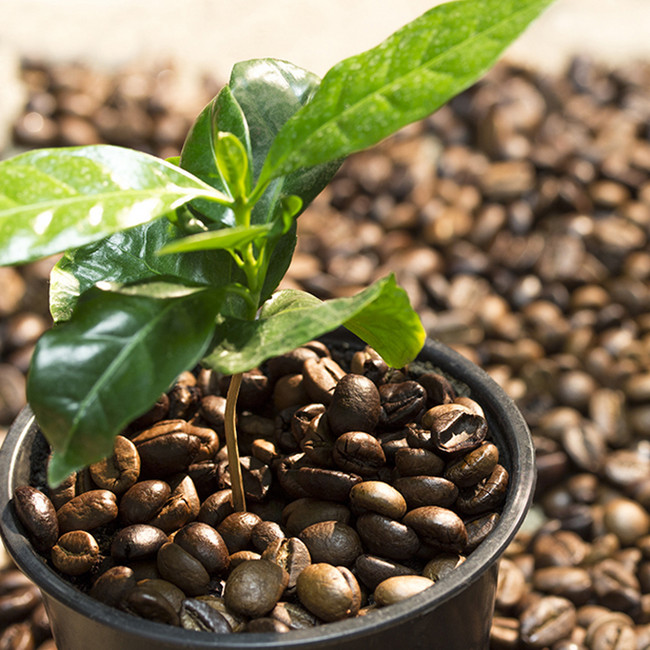✕



✕

Tag:Coffee Emission Environment 2023-08-25 15:26
A new technique developed by scientists in Australia can upcycle waste coffee grounds to make up to 30% stronger concrete. The method, called pyrolysis, aims to divert a majority of coffee waste for use in construction projects rather than being dumped in landfills to promote environmental betterment.
The team has produced biochar, a lightweight residue similar to charcoal and used it to replace a portion of the sand required to make concrete, from waste coffee grounds.

“We got the best performing concrete mix with biochar derived from spent coffee grounds pyrolyzed at 350℃ and used as a partial replacement of sand (15% of sand replacement),” Dr. Rajeev Roychand, lead author from RMIT University, tells FoodIngredientsFirst.
The technique mentioned in the research is proposed to be “more energy efficient” because it requires lower than usual temperatures.

Samples of unroasted coffee beans, roasted coffee beans, spent ground coffee and the team’s coffee biochar. (Image credit: Carelle Mulawa-Richards, RMIT University).
“Typically pyrolysis has a high energy input because you need to raise temperatures to somewhere between 700 to 900℃,” says Dr. Shannon Kilmartin-Lynch, study co-lead and a vice-chancellor’s Indigenous postdoctoral research fellow at RMIT.
The RMIT engineers claim the method to be the “first” to prove that waste coffee grounds can be used to improve concrete.
Overcoming challenges
Bringing the innovative idea to fruition came with challenges for the team.
“It took about one year to develop process parameters to enhance the physicochemical and microstructural properties of biochar derived from spent coffee grounds,” Roychand tells us.
Executing the “fully designed” experimental work took another three months.
The team set off by adding raw spent coffee grounds into concrete, but due to its “high organic content,” it was faced with the roadblock of the grounds “leaching out” organic compounds into the concrete.
“This was significantly hampering the concrete strength development,” he notes.
The team then worked toward improving its “physicochemical and microstructure properties” to make the waste compatible with concrete applications.
Another challenge faced by the scientists was the “minimization of energy” energy required to process the waste material, which they addressed by “reducing the processing temperature.”
Normal heating of the material was another hurdle since exposing it to air/oxygen burns and turns it into ash, according to the researchers.Five male researchers in a computer room smiling.
“Our focus was to reduce emissions and preserve carbon, so we looked at restricting the access of oxygen. Finally, we got a treated byproduct that significantly enhanced concrete strength when used as a replacement for sand,” underscores Roychand.
Upcycling coffee waste for sustainable construction
Australia produces approximately 75 million kg of ground coffee waste yearly, most of which goes to landfills. Meanwhile, 10 billion kg of spent coffee is generated annually across the globe.
The study highlights the potential of “100% of 75,000 tons” of waste spent coffee grounds (SCG) to be used in structural concrete.
“The inspiration for our work was to find an innovative way of using the large amounts of coffee waste in construction projects rather than going to landfills – to give coffee a ‘double shot’ at life,” states Roychand.
He flags that the scientists treat the SCGs using the same roasting process used on green coffee beans to bring out the taste and smell, albeit in the “absence of oxygen.” This helps in improving its performance as concrete.
“The ongoing extraction of natural sand around the world – typically taken from river beds and banks – to meet the rapidly growing demands of the construction industry has a big impact on the environment,” states Professor Jie Li, corresponding author and research team leader at RMIT.

The researchers claim the method to be the “first” to prove that waste coffee grounds can be used to improve concrete. (Image credit: RMIT University).
He added that with a “circular-economy” approach, they could keep organic waste out of landfills and better preserve natural resources like sand.
Last week, FoodIngredientsFirst’s sister website, NutritionInsight, spoke with Foodvalley NL, which flagged that worldwide, one-third of food produced every year – 1.3 billion metric tons – is lost or wasted. These losses account for around 8% of all global greenhouse gas emissions caused by humans.
‘Transforming spent coffee grounds into a valuable resource for the enhancement of concrete strength’ is published in the Journal of Cleaner Production.
Why Chardonnay Is The Best Wine To Pair With Lobster Rolls
Don't Go To A Brazilian Steakhouse Without Knowing How To Use The Table Cards
The Chef-Approved Ingredient That Thickens Runny Takeout Sauces
Cured Vs Uncured Hot Dogs: What's The Difference Between The Sausages?
Even Grilled Chicken Can Be Fall-Themed With The Right Ingredients
Give Store-Bought Honey Mustard A Restaurant-Quality Kick With One Ingredient
About Us Terms of Service Privacy Policy Contact Us
Hotline(+86)17301604571
 Enterprise WeChat
Enterprise WeChat
for Client Service
 EZBuy
EZBuy
WeChat APP
Sinoexpo Digital Platform
Shanghai Sinoexpo Informa Markets International Exhibition Co., Ltd. All rights reserved
沪ICP备05034851号-77
 沪公网安备31010402000543号
沪公网安备31010402000543号